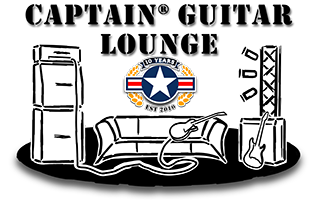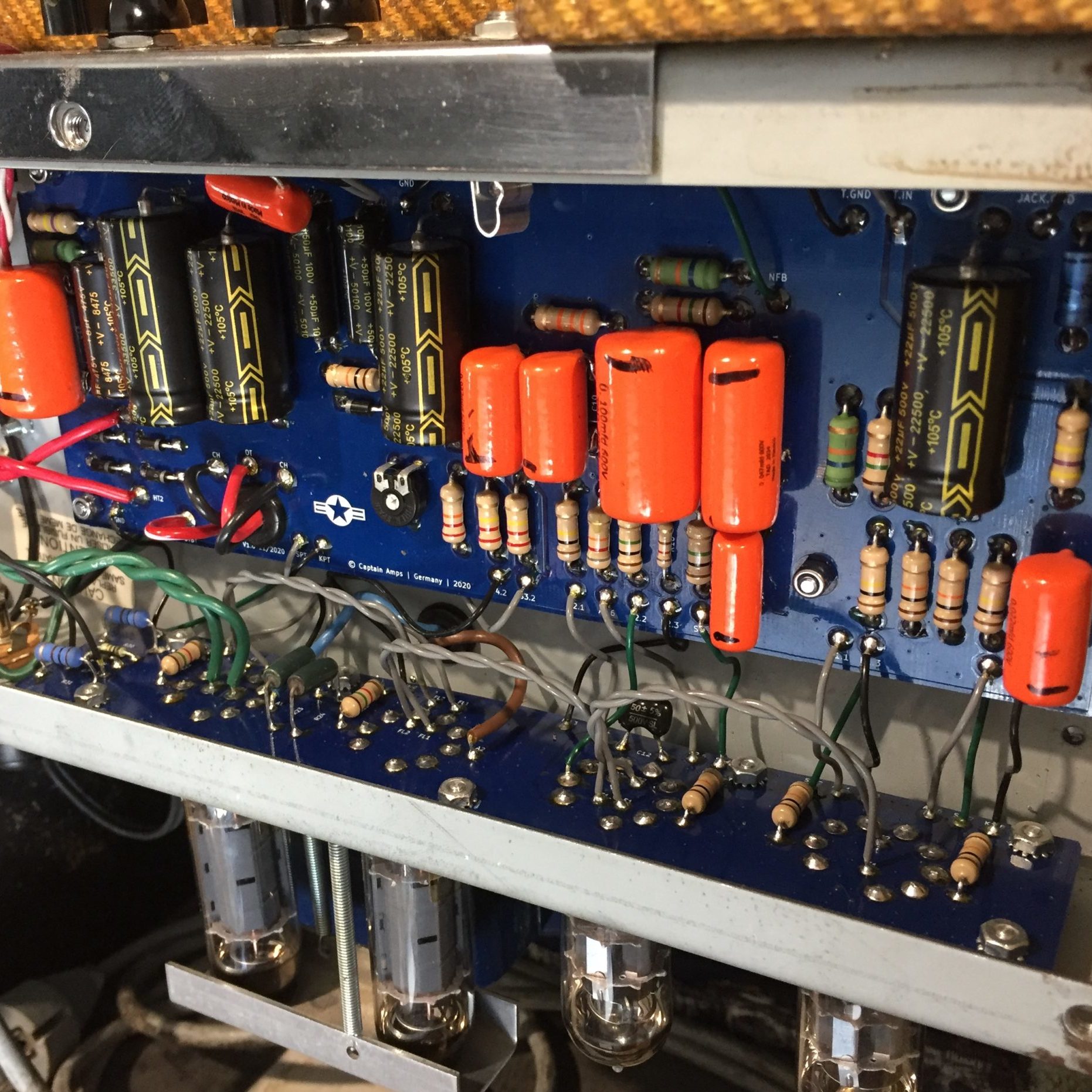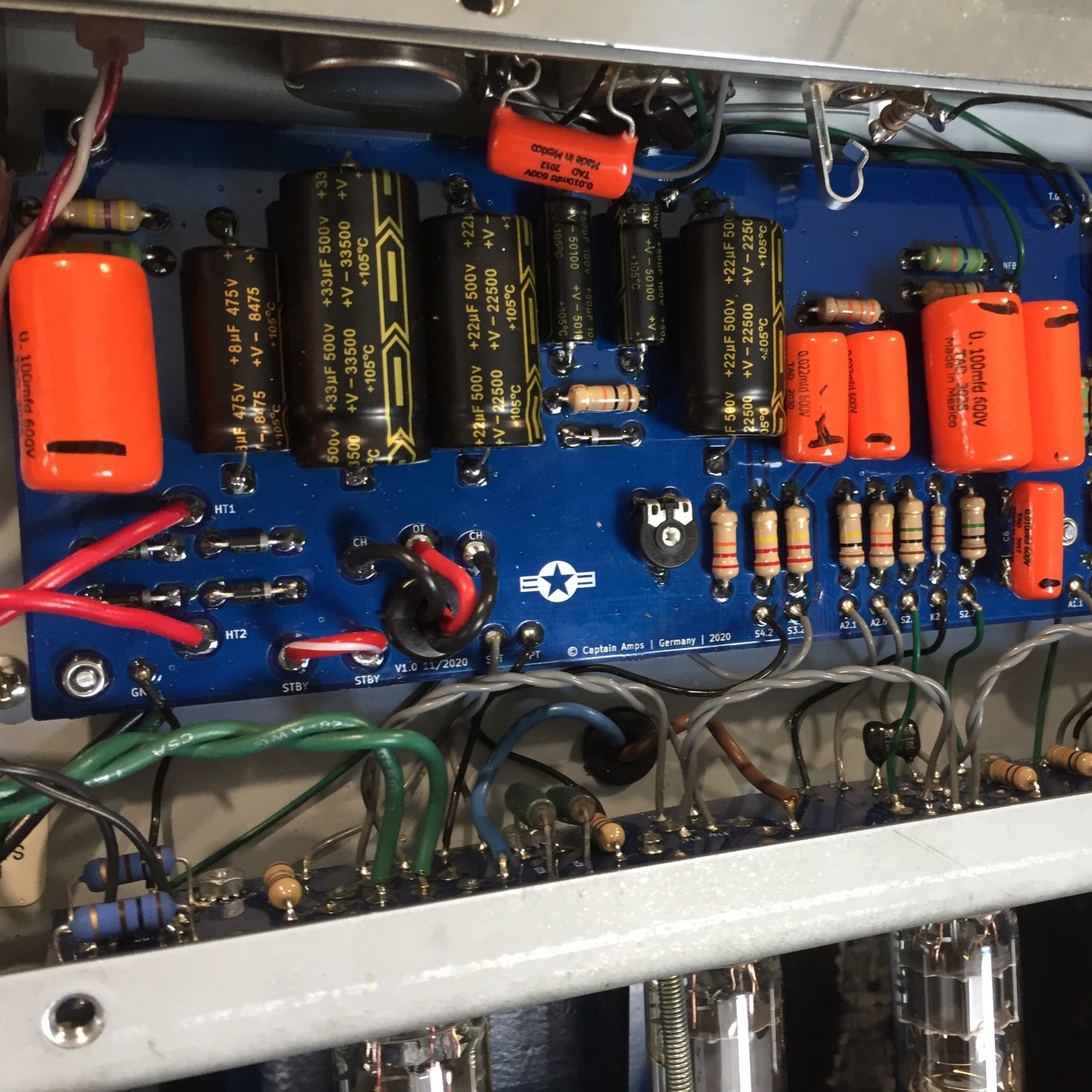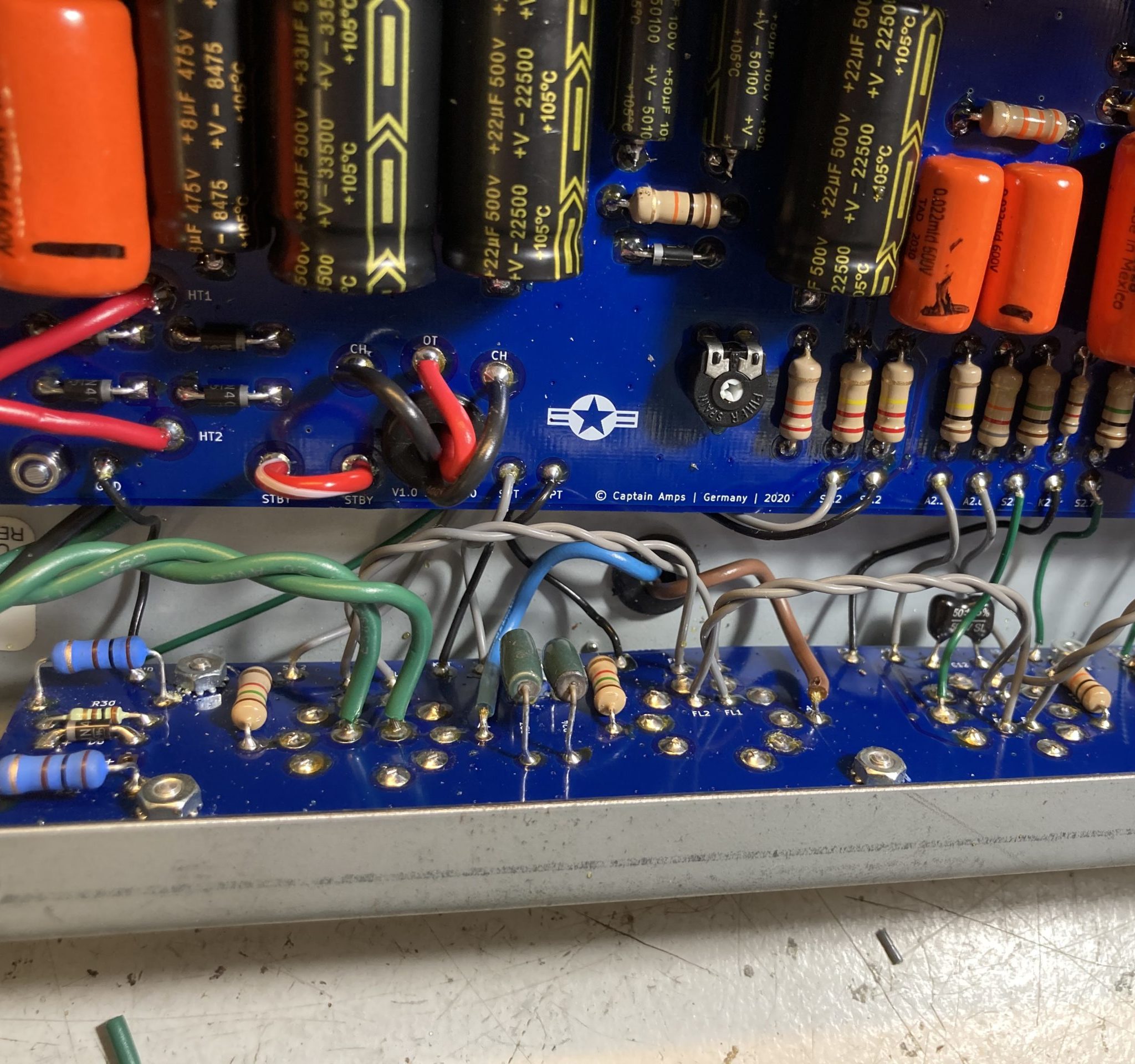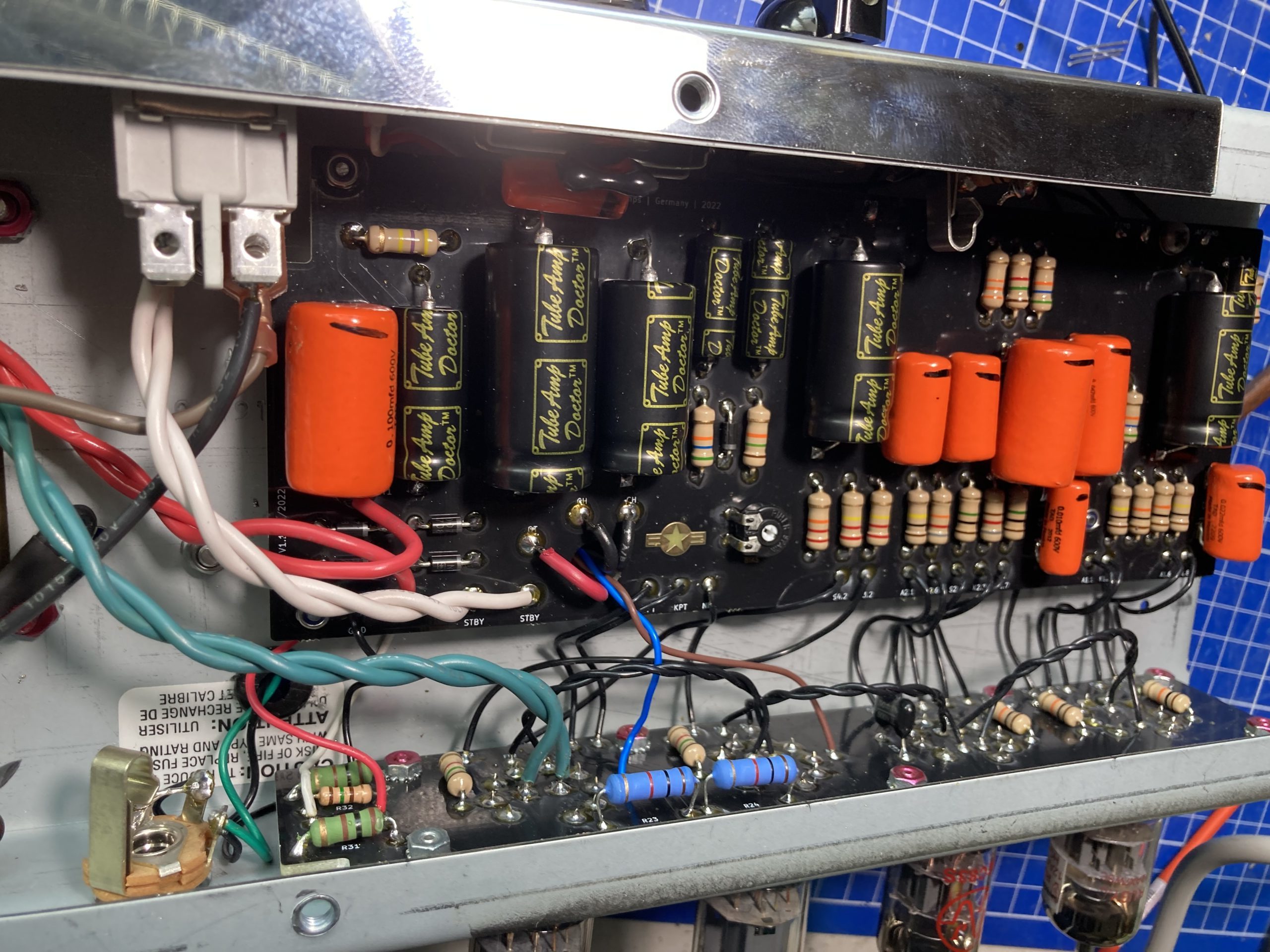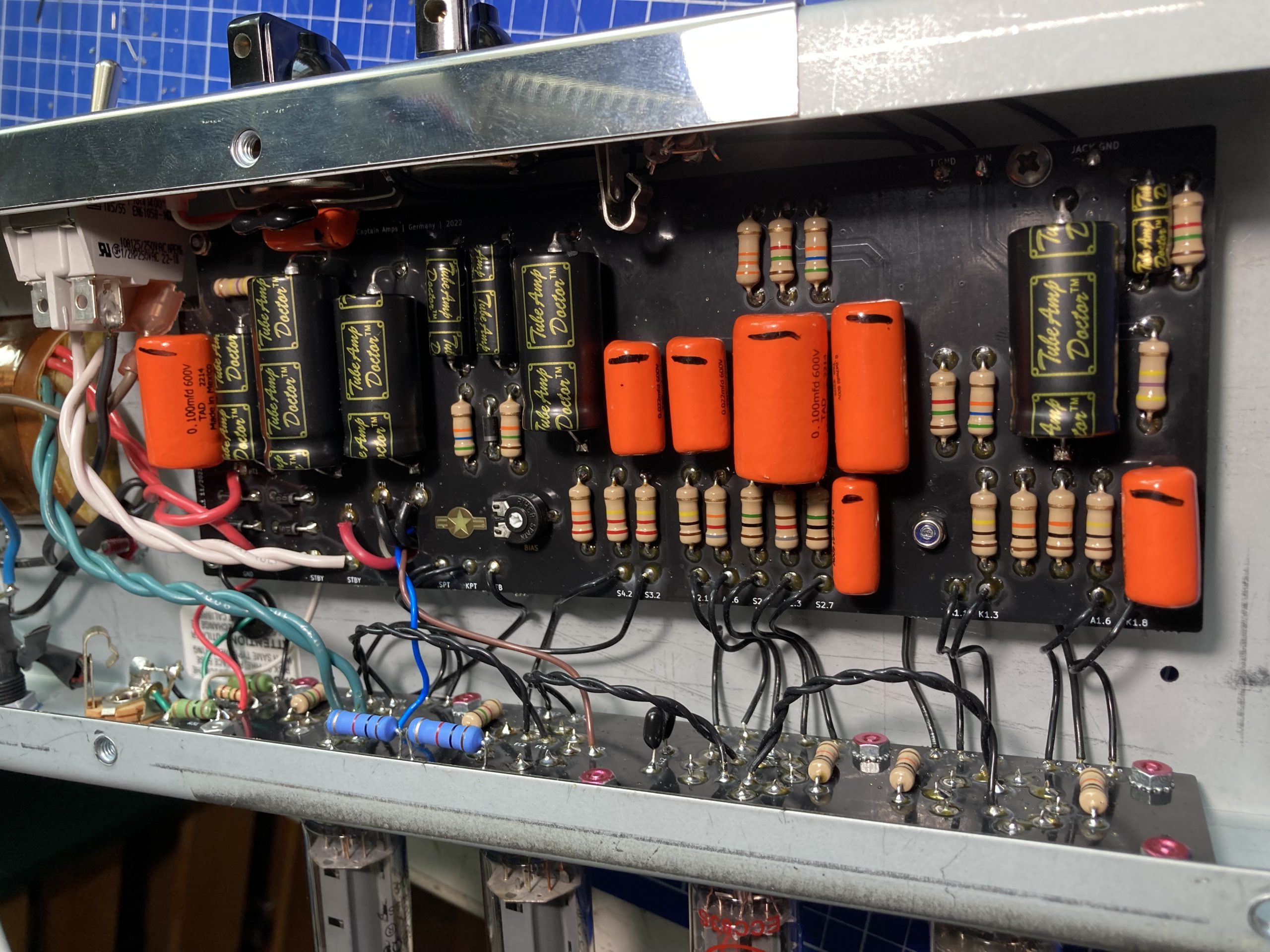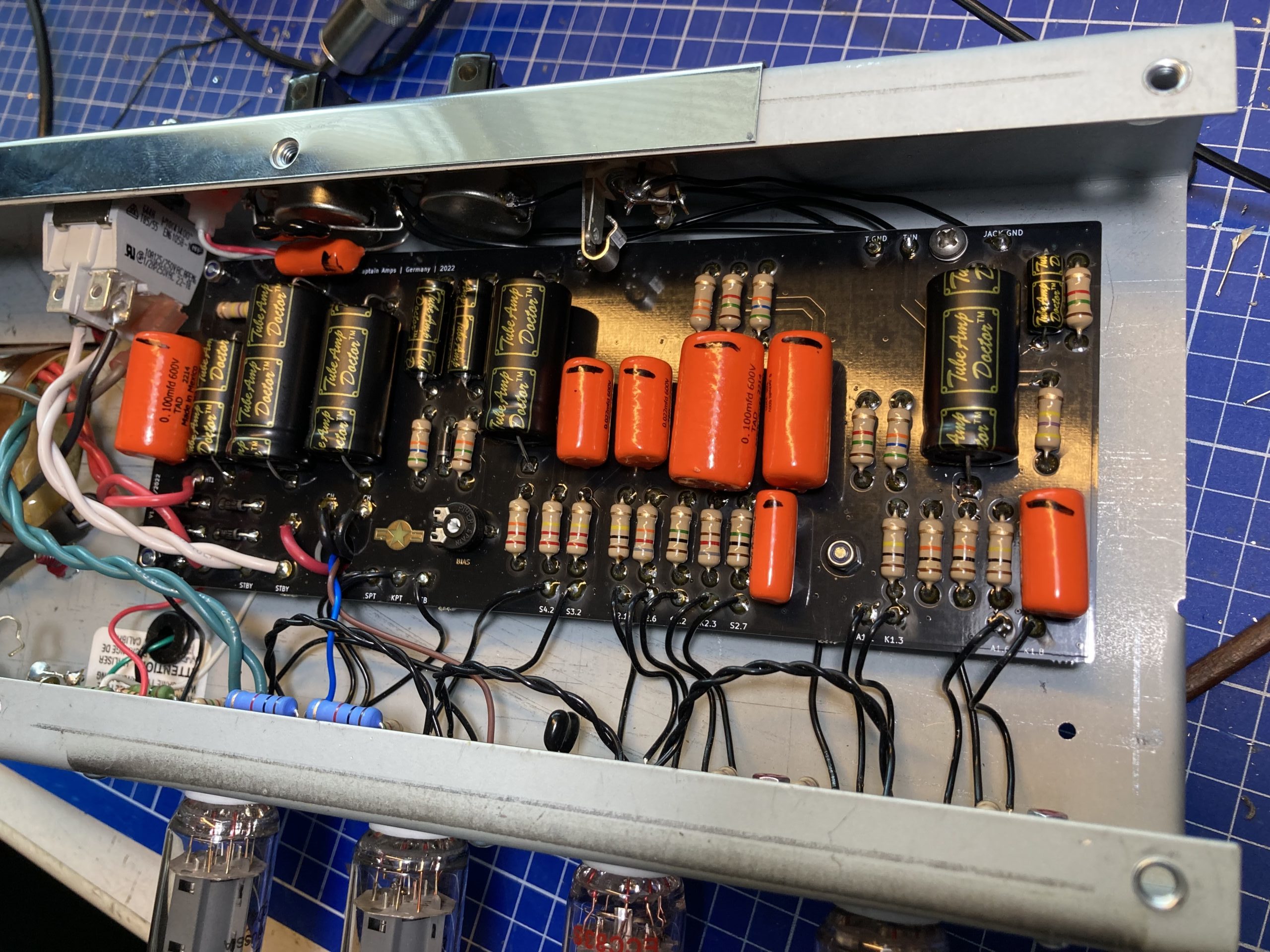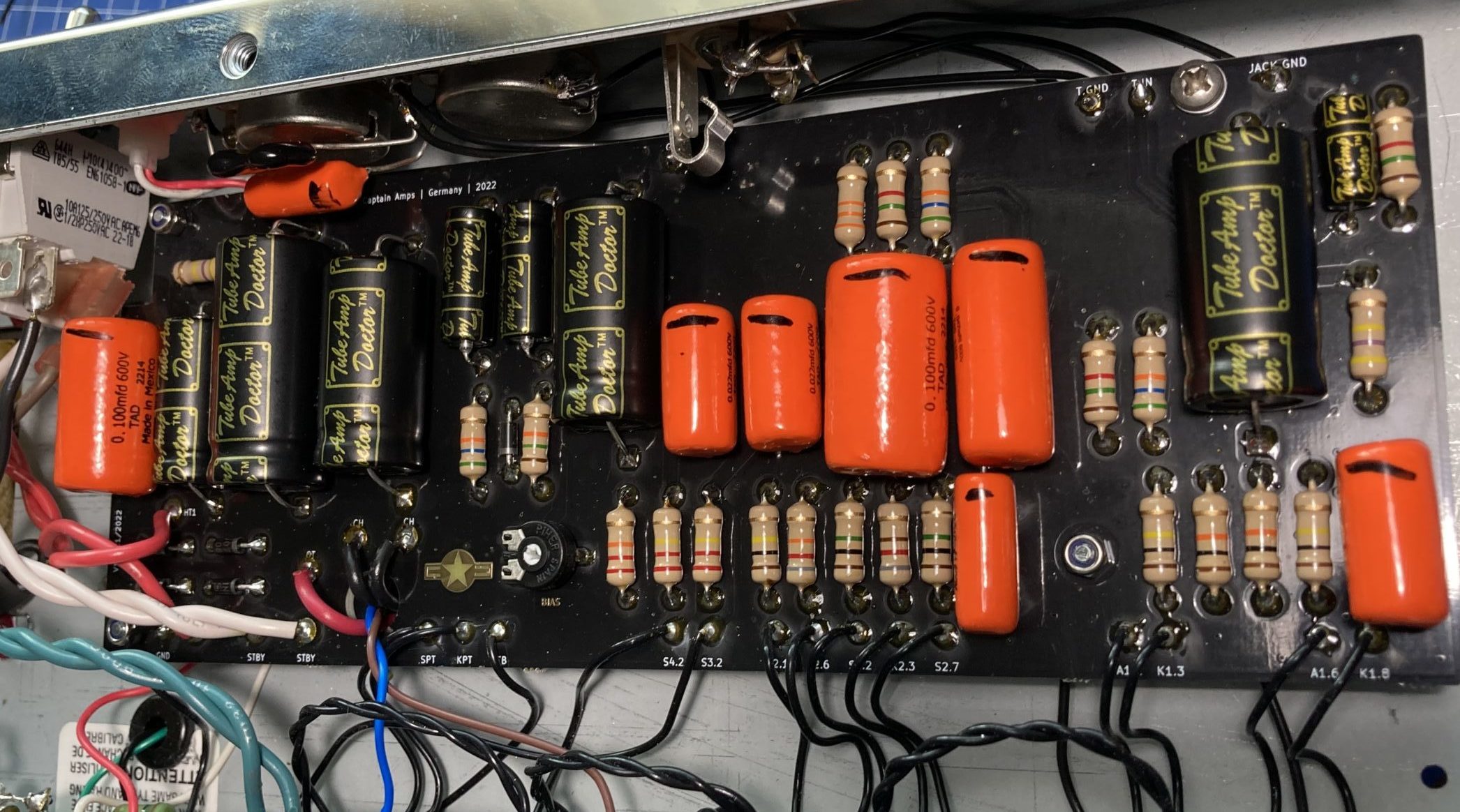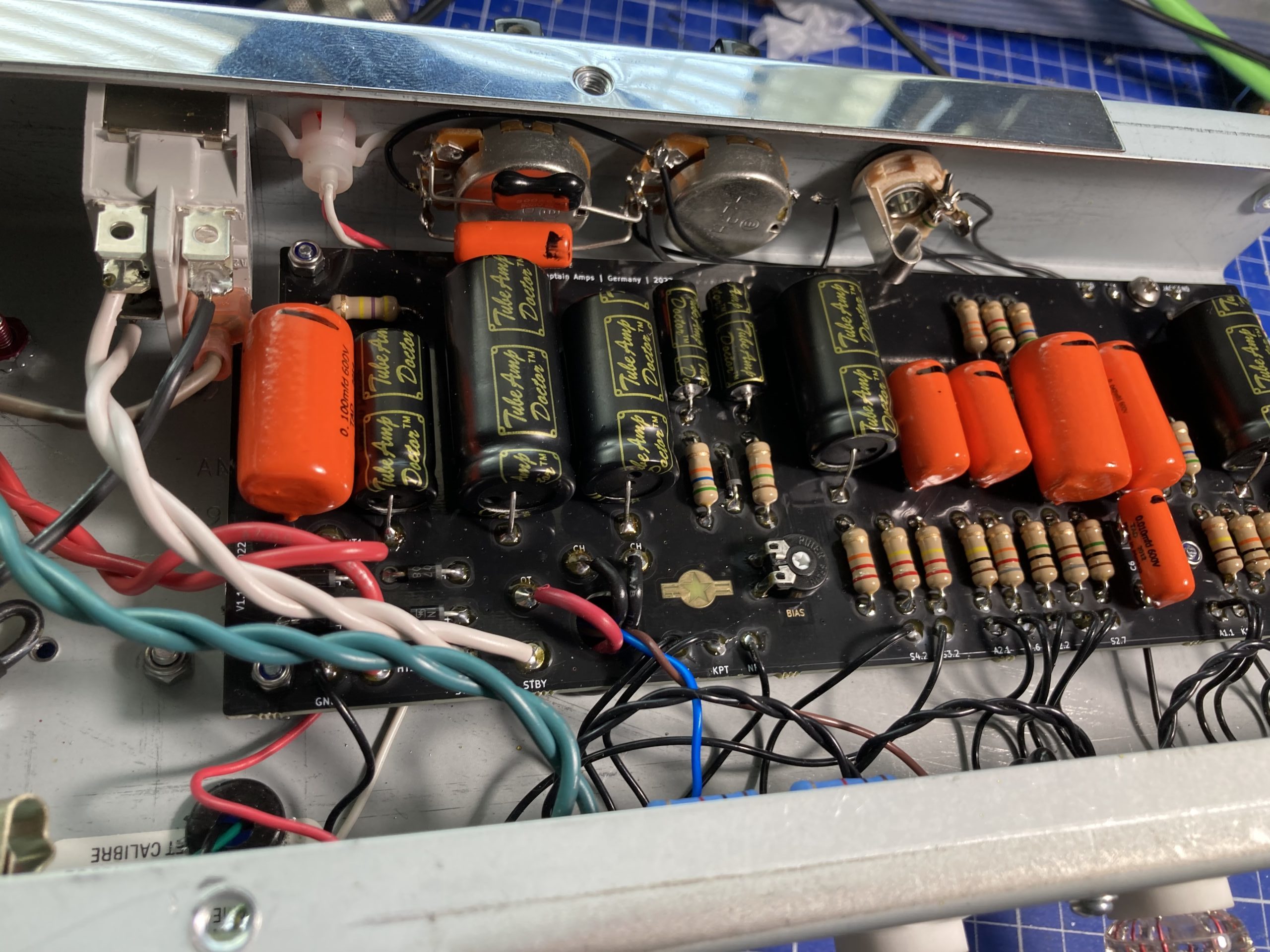
Captain Amp Mods
Fender Pro Junior
The Fender Pro Jr. first hit the market in late 1993, or at least the first release was released in September 1993. Since then, much has changed. In almost 20 years of production the curcuit was altered somewhat.
Versions
Versions such as Cream boards and Green boards are distinguished, as are the more obvious version changes in the name. Currently we are at version IV which are available in stores. On the used market you can still find all versions, which all differ in certain points – which one is the best, I am not able to say…
Key to success
The Pro Jr. is a success story: small, light, handy. Still decently loud for the (small) band or combo, pedal friendly and two knobs is more then enough. But…in almost twenty years some weaknesses have become apparent some of which have already been improved in newer versions even if not completely. Reason enough to help this little guy! Weak points are mainly the reliability and the sound variety, which is a bit meager, and the adjustment options are not particularly good, which has several reasons:
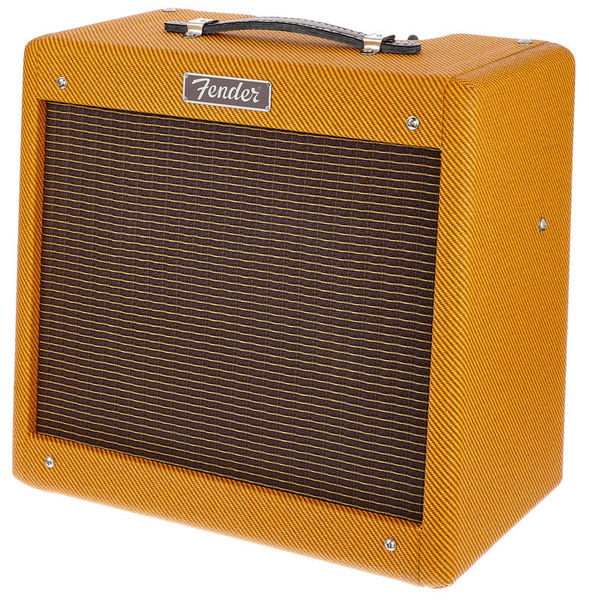
Weak points
Even with Vol set to 0 the Pro Jr. exhibits an annoying 100Hz hum that can be attributed to a circuit fault as well as a grounding problem in some versions. All versions are affected by this, in my experience. This can be corrected by a change in the preamplifier and sometimes by removing the upper middle screw, but not always the latter. 1st point: more preamp filtering!
Somewhat annoying is the fact that the Pro Jr. already reaches volume saturation at volume 4, even with single coils. After that it’s just more gain coupled with more ambient noise. Most amps are operated somewhere between 1 and 2 and then are already too loud. Often the request arrives us whether we can install a powersoak – this helps, but does not solve the problem… In version IV the gain has been toned down a bit, which makes the amp seem more “playable” and sounds a bit more “open”. However, this is not 100% yet. So 2nd point: less gain!
The excessive gain is also made worse by the fact that the tone control has been equipped with “wrong” component values. Of course it’s not completely wrong, it works but it can be done better anyway. The control acts in two directions: at the top it passes more treble and in the lower control range it takes away treble so that the sound becomes bassier. The upper range is too heavily dimensioned so that actually all frequencies are passed on and the volume control loses its effectiveness. And on the lower end the control takes away too little treble, so you have little influence on the shaping of the frequency band. This can be done better with selected component values. So 3rd point: better tone control!
After a couple of years of use, the first weak points in the design become apparent: the amp cuts out sporadically! Most of the time the input jack comes detached from the board, so that no guitar signal can get into the amp at all, or the solder joints on the knobs break, resulting in loose contacts. The basic problem is that the components that are operated are soldered directlx to the board and at the same time have little or no support on the front panel (the input socket nut also tends to loosen…). This means that all force is transmitted directly to the solder joints. It’s cheap to produce, but it doesn’t last long. So 4th point: better fastening of bushing and knobs
.
The bottom side doesn’t look any better either: The tube sockets are soldered directly to the PCB, which isn’t bad at first, but the Pro Jr. can’t dissipate the heat because the soldering points are pretty thin and there’s no mass to dissipate the heat. The solder joints break down over time and cause loose contacts, failures, or even tube defects. So 5th point: better socket+surrounding!
The high heat dissipation is also related to the usually very high quiescent current of the power amp tubes, because emphasis has been given primarily to production cost and less to longevity. With the bias set to high the amp does not sound bad but it wears out the tubes faster and can weaken surrounding components – but in return you can use all tubes and they sound good because they never run too cold… good for the crowd, but stupid for the user who has to live with the problems. Here’s the 6th point: install trim pot and adjust bias.
The components used are not that bad, except for a few electrolytic capacitors in early versions, which tend to break. What is annoying, however, is the fact that component replacement is really difficult because the PCB is not well manufactured, some conductive tracks come off the board and also the interconnects tend to break off because the cable that is used is too stiff. All this is not very service-friendly if you want to replace the electrolytic capacitors after a good 10 to 20 years. So point 7: new board and better/new components.
Modifications
There are a few points on the amplifier that need to be improved. And these are all problems that occur more or less often and are the subject of complains. It’s not like we’re making all this up. But what we come up with are other improvements that the amp doesn’t have:
Standby switch
For pauses, to replenish drinks, or to get a breath of fresh air, you’d be happy to switch to standby – if there was one. Unfortunately, the Pro Jr’s circuitry is not designed for this, mainly because it lacks a separate winding for the bias voltage in the transformer. Retrofitting in the existing circuit is quite costly, if it is not to be tied with inadequacies. So: Provide and install a good quality standby switch.
Adding a choke
As with many amplifiers, a choke in the amplifier’s power supply works miracles. More dynamics, better string separation and feel – actually exactly what you always want. I don’t know how many times we have already described the topic on the homepage, but it’s just like that, a MUST for every amplifier (imho).
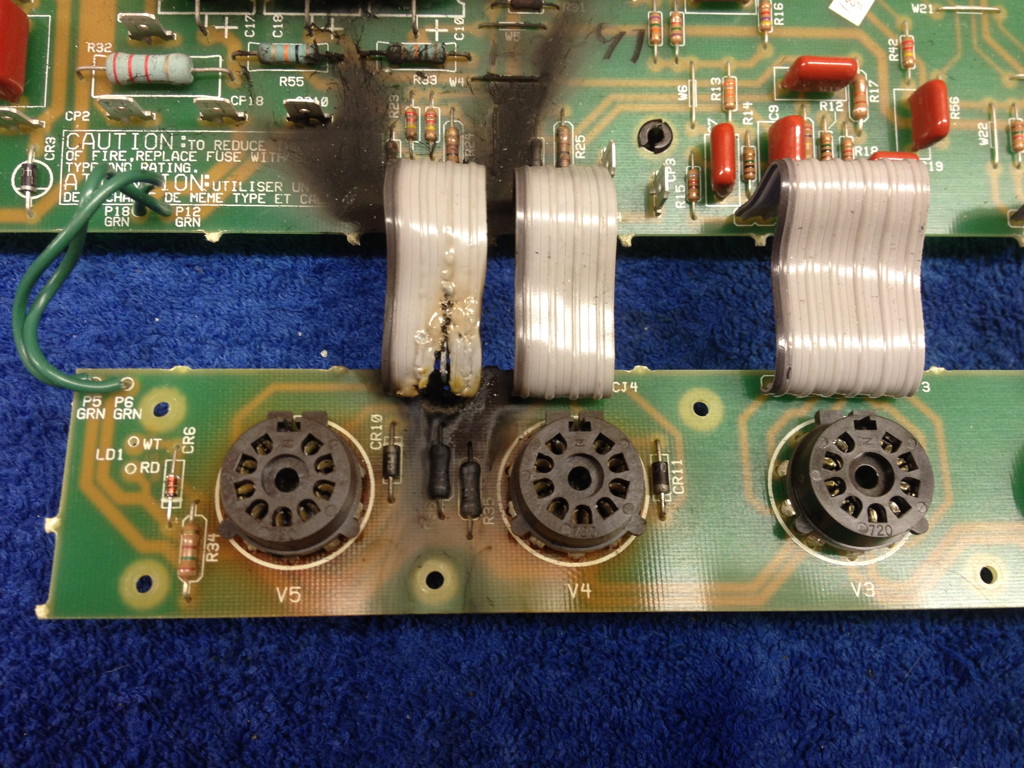
Worst case: Burnt-out power tube board
ALL-INCLUSIVE CAREFREE PACKAGE
The solution:To realize all the above points with the original board is an insane effort that is not really worth it. One or two of the points mentioned are quite doable, but if you want a really good amplifier that also lasts longer, you won’t get far with the original board. So a new board is needed! And at the same time you can take into account all the small errors and include improvements. And that’s what we do:
- New board, two-layer with solid copper and thick traces.
- Components: High-quality electrolytic capacitors, orange drops, and carbon film resistors in oversized dimensions.
- Circuit improvements (tone, bias-pot, hum, gain…)
- Ceramic tube socket with good heat dissipation
- Retrofitted choke and standby switch
- Switchcraft jacks and alpha pots mounted directly to the front and wired individually.
377,00 €
single modifications
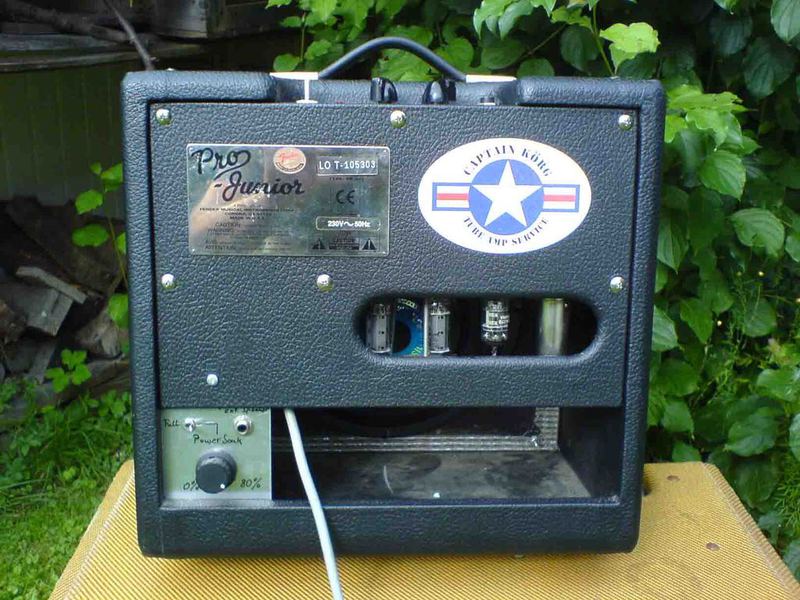
Gain & hum reduction
…so that the volume control also reacts sensibly over 2 and the amplifier does not immediately distort.
67,00 €
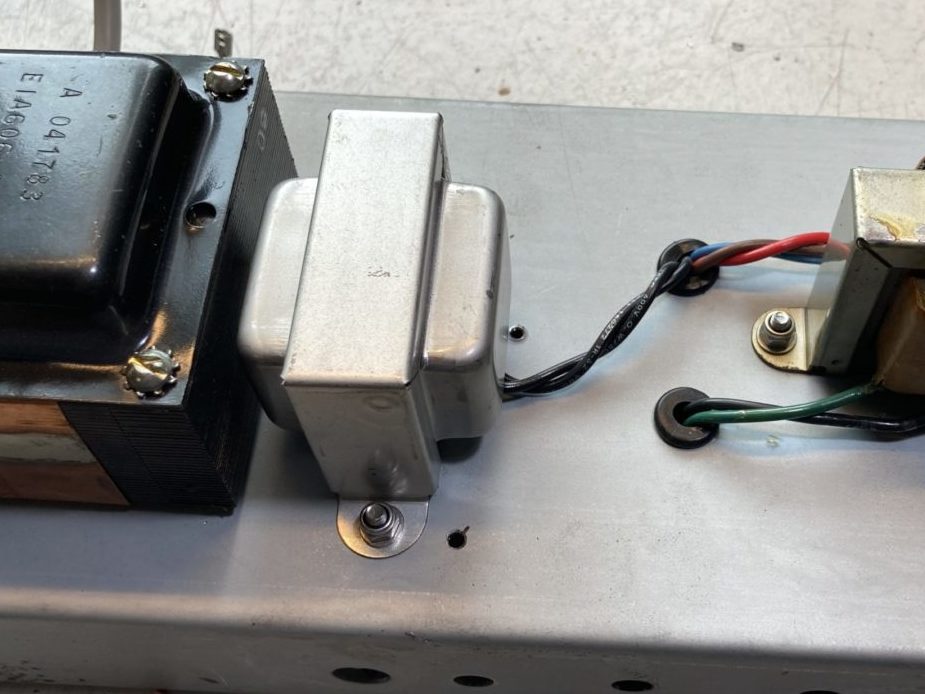
Choke – Mod
Retrofitting a choke in the power supply – the sound becomes more dynamic, the distortion becomes smoother. The response of the amplifier becomes more immediate.
107,00 €
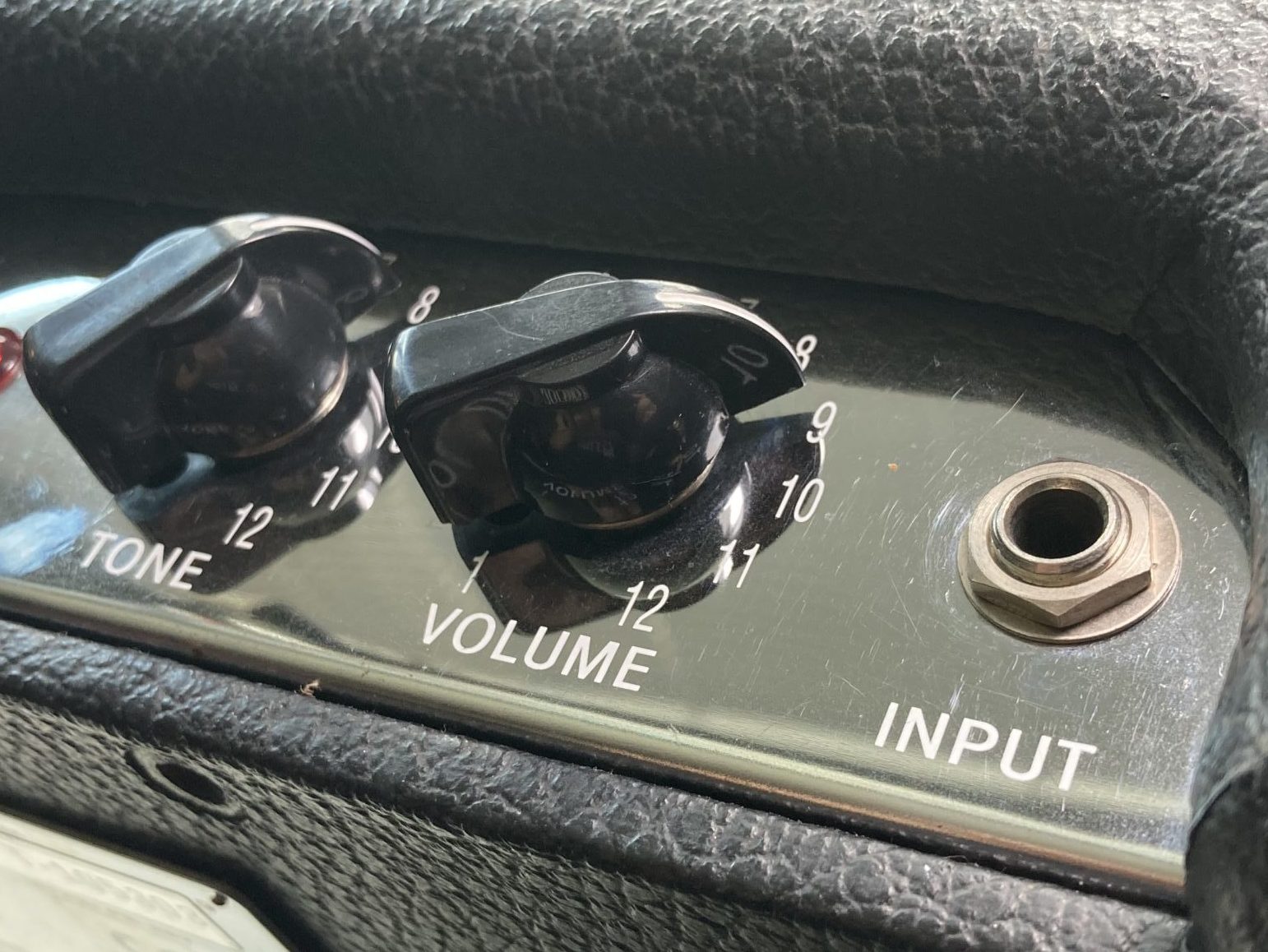
Jack & pots upgrade
Switchcraft jack and potentiometer attached directly to the front panel. No more broken solder joints and contact problems.
57,00 €

Inspection tube amplifier
Prior to modification, the amplifier should receive an inspection.
Range of inspection
67,00 € – 127,00 €
TRANSFORMERS
Transformer overview only available in desktop view
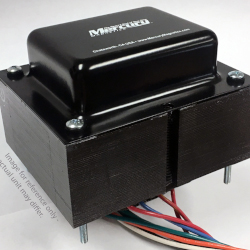
Mercury Magnetics FPROJR-P-U Pro Jr. Power Transformer
Pro Jr — Universal Voltage Primary — Upgrade!
223,00 €
Available on backorder
KOMMENTARE
Hallo Captain-Team,
ich bin beeindruckt, was aus dem Pro Junior rausgeholt werden kann! Alle Nebengeräusche, ob es Summen, Klirren oder Brummen war, sind weg. Auch der Lautstärkesprung ist behoben. Der Tone und Volume Regler funktionieren sehr gut. Den Amp auf niedriger Lautstärke zu spielen ist auch kein Problem.
Ich habe mich für das Komplettpaket entschieden:
Rundum Sorglos Paket (Platinenumbau), Celestion G10M Greenback, Speaker Shakedown 72 Stunden, Ausgangsübertrager, Netztrafo, Standfüße aus Gummi, Röhren Paar EL84-Cz.
Ich bin sehr zufrieden und habe, nach viel zu langem Überlegen, die richtige Entscheidung getroffen.
Vielen Dank an das Captain-Team und besonders an Anselm aus der Werkstatt, für seine hilfreiche Beratung und tolle Umsetzung.
Herzliche Grüße
Marco
Hai,
möchte ein kurzes “Feedback” geben von meinem Pro Junior. Die Operation am offenen Herz hat er gut überstanden, ich habe ihn zunächst nur zu Hause “trocken” gespielt, er lässt sich jetzt viel besser bändigen, Tone und Volumen Control reagieren direkter (es passiert wirklich etwas beim Regeln). Der Sound ist jetzt etwas wärmer und am Besten sind die fehlenden Nebengeräusche. Er hat bei einer bestimmten Lautstärke immer “geklingelt” und bei leisen Stratgeklimper immer mal gerne “gezirpt”. Freue mich jetzt das ich mich für das Komplettpaket entschieden habe. Gestern im Proberaum ist das sogar meinen Freunden aufgefallen, “dein Amp klingt viel klarer und wärmer als sonst” In Verbindung mit den Effekten auf dem Pedalboard merkt man den Unterschied zu Vorher/Nachher gut.
Also bleibt mir nur: Vielen Dank zu sagen für die gute Beratung und die saubere Arbeit.
LG Rudolf
2022
Ich hatte folgendes Problem.Der Amp hat nach ca. 20 min Betriebsdauer massiv an Leistung verloren und stark verzerrt. Mein örtliches Musikgeschäft konnte aber keinen Fehler finden. Also den Amp zur Captain Guitar Lounge geschickt. Fehlerdiagnose: Kurzschluss in einer Endröhre mit Schädigung der Schirmgitterwiderstände.
Habe mich dann für das Rundum-Sorglos-Paket für den Fender Pro Junior entschieden. Ich bin sehr zufrieden. Mehr Headroom, deutlich besserer Regelweg der Potis, sodass man den Sound differenzierter einstellen kann. Der Amp klingt klasse.
Thomas 2022
Dear Captain, I have had my Fender Pro Junior III with the full package of mods back for about a week. I have played it every day since then. What can I say? The way that the amp is now is surely the way that we all wish that they would come straight from the factory. Notes sound “three dimensional”, they practically “drip”. The Volume control actually works and the amp no longer goes into overdrive at 4! Thus it is now a much more subtle instrument than before. The Tone control works better too. Shortly after getting the amp back I wrote an email to the Captain Guitar Lounge techs that expressed my surprise and to be honest – joy – at how good the amp sounded. “I got the amp from the mail room and tried it out right away with both my Tele and my Strat. The amp sounds surprisingly good, the results go beyond my expectations. I was already pretty satisfied with the amp, that’s why it took several months for me to decide to do the mods in the first place, as you probably assumed from my previous correspondence. The hum/noise that the amp had before (which in the case of my amp might not have been quite as bad as it is for some Pro Junior owners) is now simply gone. Since the amp now sounds perfect at room volume, I was able to play for an hour with an open window in the middle of the complex where I live. The feel of the amp now is simply amazing now. I think that I will savor the amp minimalistically for a while before I try it out with the pedalboard.” Since I wrote this original response I’ve found about ten or twelve hours to play the amp. It’s so inspiring, it’s kind of like a drug. In the meantime I broke down and hooked up the pedalboard. Adding reverb and delay sounded amazing. The biggest revelation: my original 90s Kalamazoo Rat distortion pedal made beautiful distortion in tones that I had never heard before. Ever since I bought the Pro Junior used I wondered if I had made the right choice. I liked it, but I had some residual doubts about whether a Blues Junior would have been better for me. For twenty years I played through the Blues Deluxe that I bought in the 90s in Ann Arbor, Michigan. I bought the Pro Junior a couple of years ago after moving to Germany. Now, there’s no question in my mind – this modded Pro Junior is the perfect amp for me! The standby position that has been installed on the power switch is awesome. Such a small detail, but once you have it you realize how stupid it is to have totally switch the amp off in order to change guitars, plus the amp warms up on standby as you pick up your guitar and is ready to play by the time you’re ready! Final thoughts: the full package of mods that Captain Guitar Lounge offers are not inexpensive compared to the cost of acquiring a Pro Junior new or on the used market. However, what you get back is effectively a boutique amp, making it a reasonable possibility to pick up a Pro Junior, send it to the Captain and get back an amp that might become a family heirloom. It seems to me that it’s a small miracle that such a shop even exists in our day and age. Think about it this way: with these mods, your Pro Junior is going to last a lot longer and give you much greater pleasure! Thank you Anselm, Flo and “the Captain”. I look forward to coming by when I’m in the Munich area! Yours, Paul
Ein grosses Lob an dich, der Pro Junior ist der absolute Wahnsinn und funktioniert einwandfrei.
Danke für Deinen Einsatz.
Grüsse Christian “Odo”
FAQ
Wie bestelle ich?
Da die Modifikationen sehr individuell sein können, schreib uns doch einfach eine Nachricht oder ruf in der Werkstatt an.
Dann klären wir alle offenen Fragen und leiten dich durch das Modifikationsprozedere.
Wenn du schon genau weißt, was du haben möchtest, dann reicht es, wenn du den Verstärker gut verpackt zu uns schickst und einen Anlieferungszettel ausfüllst und beilegst.
Natürlich kannst Du ihn auch persönlich in der Lounge abgeben.
Wie lange dauert es?
Je nach Modifikationsumfang und aktueller Auslastung etwa ein bis vier Wochen.
Gern geben wir am Telefon oder per Email eine genauere Zeitabschätzung ab.
Wie sieht es mit der Gewährleistung/Garantie aus?
Wenn der Verstärker noch in der Herstellergarantie ist (üblicherweise 2 Jahre), erlischt diese, sobald wir einen Eingriff vornehmen.
Für unsere Leistungen gilt die gesetzliche Gewährleistung von einem Jahr.
Aber auch danach stehen wir mit Rat und Tat zur Seite wenn es ein Problem gibt.
Ich brauche etwas Spezielles
Seit 2010 reparieren und modifizieren wir Verstärker und haben jede Menge Erfahrung.
Praktisch jeder Verstärker war schon mal auf unserer Werkbank und hunderte Modifikationen wurden durchgeführt.
Teil uns per Email oder am Telefon Deine Wünsche mit, ich bin sicher wir haben eine Lösung parat.


